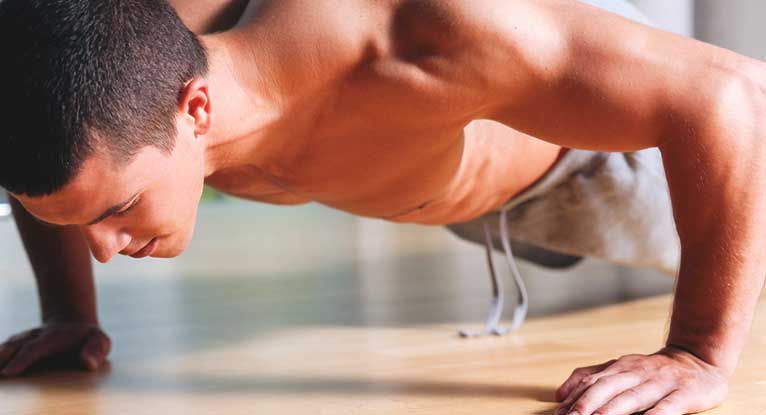Poor posture doesn’t just affect how you look—it can also lead to chronic pain, fatigue, and even digestive issues. Sitting at desks, slouching over phones, or standing improperly can slowly weaken your back and shoulders. The good news? You don’t need complicated workouts or expensive therapy to fix it. Yoga, a gentle and holistic practice, offers powerful poses that help realign your spine, strengthen core muscles, and restore your natural posture.
In this article, we’ll dive into the best yoga poses for posture correction, how they work, and how to practice them safely and effectively. Whether you’re a beginner or someone looking to restore your body’s natural alignment, these poses can help you heal your spine and stand taller—inside and out.
Why Yoga Helps with Posture
Yoga is more than just stretching. It emphasizes alignment, balance, strength, and breath awareness. When done regularly, yoga can strengthen the muscles that support the spine, release tension from the back and neck, and promote body awareness—so you naturally start correcting your posture throughout the day. Many yoga poses also activate the core and open the chest, both of which are critical to standing and sitting upright.
Signs of Poor Posture You Shouldn’t Ignore
- Rounded shoulders or forward head
- Lower back pain or stiffness
- Neck tension or headaches
- Hunched upper back (kyphosis)
- Tilted pelvis or uneven hips
- Feeling tired after short periods of sitting or standing
If you experience any of these regularly, your posture might be affecting your overall health. Incorporating targeted yoga poses into your routine can provide relief and long-term posture correction.
1. Mountain Pose (Tadasana)
Don’t be fooled by how simple this pose looks. Mountain Pose is a foundational yoga posture that teaches you how to stand tall and align your body from head to toe.
How to Do It: Stand with feet together, big toes touching, and heels slightly apart. Distribute your weight evenly across both feet. Engage your thighs, draw your belly in, and lift your chest. Roll your shoulders back and down. Keep your arms at your sides with palms facing forward. Lengthen through the crown of your head.
Benefits:
- Improves body awareness
- Aligns the spine
- Builds a strong foundation for all other poses
2. Cat-Cow Pose (Marjaryasana-Bitilasana)
This gentle flow between two postures helps release tension in the spine and increases flexibility in the neck, shoulders, and back.
How to Do It: Start on your hands and knees in a tabletop position. As you inhale, arch your back, drop your belly, and lift your head and tailbone (Cow Pose). As you exhale, round your spine toward the ceiling, tuck your chin to your chest, and draw your navel in (Cat Pose). Flow between the two for 5-10 breaths.
Benefits:
- Warms up the spine
- Encourages flexibility
- Improves coordination between breath and movement
3. Downward Facing Dog (Adho Mukha Svanasana)
A classic yoga pose that stretches and strengthens the entire body, Downward Dog especially benefits the back and shoulders.
How to Do It: Start in a tabletop position. Tuck your toes, lift your knees, and press your hips toward the ceiling. Try to straighten your legs and press your heels toward the floor. Keep your arms shoulder-width apart and fingers spread wide. Lengthen your spine and relax your head between your arms.
Benefits:
- Elongates the spine
- Strengthens the shoulders and core
- Relieves back and neck tension
4. Cobra Pose (Bhujangasana)
Cobra helps strengthen the lower back and open the chest—perfect for correcting slouched posture caused by too much sitting.
How to Do It: Lie on your stomach with palms flat under your shoulders. Press your legs and tops of your feet into the floor. As you inhale, gently lift your chest using your back muscles (not your hands). Keep your elbows slightly bent and close to your body. Look forward and slightly upward without straining your neck.
Benefits:
- Strengthens the spine
- Opens the chest and shoulders
- Improves posture and breathing
5. Bridge Pose (Setu Bandhasana)
Bridge is excellent for opening the front body while activating the glutes and lower back muscles, which are essential for a healthy spine.
How to Do It: Lie on your back with knees bent and feet hip-width apart. Place your arms by your sides. Press into your feet to lift your hips. Keep your thighs parallel and engage your glutes. Interlace your fingers under your back and press your shoulders into the mat.
Benefits:
- Strengthens glutes and lower back
- Opens chest and shoulders
- Supports spinal alignment
6. Child’s Pose (Balasana)
A gentle resting pose, Child’s Pose allows the spine to stretch and relax, especially after back-strengthening poses.
How to Do It: Start on your knees, touch your big toes together, and sit back on your heels. Fold your torso forward and extend your arms in front or beside your body. Rest your forehead on the mat and breathe deeply.
Benefits:
- Releases tension from the lower back
- Encourages spinal lengthening
- Promotes relaxation and awareness
7. Locust Pose (Salabhasana)
This backbend strengthens all the muscles along your spine, helping to reverse the effects of poor posture and build endurance in your back body.
How to Do It: Lie on your stomach with arms along your sides, palms facing down. As you inhale, lift your chest, arms, and legs off the floor. Keep your gaze down to avoid straining your neck. Hold for a few breaths, then slowly release.
Benefits:
- Strengthens the entire back
- Tones glutes and hamstrings
- Counteracts rounded shoulders
8. Extended Triangle Pose (Trikonasana)
Triangle Pose stretches and strengthens the spine, hips, and legs while improving balance and body awareness.
How to Do It: Stand with feet wide apart. Turn your right foot out and left foot slightly in. Extend your arms at shoulder height. Reach your right hand forward and tilt your torso over your right leg, placing your hand on your shin or the floor. Stretch your left arm up and look toward your top hand.
Benefits:
- Lengthens the spine
- Opens hips and shoulders
- Enhances alignment and stability
9. Plank Pose
This isometric pose works your core, shoulders, and back—all key players in supporting good posture.
How to Do It: Start on hands and knees, then step your feet back to form a straight line from head to heels. Engage your core, keep your shoulders over wrists, and don’t let your hips sag or rise too high. Breathe steadily and hold the pose.
Benefits:
- Builds core stability
- Strengthens the entire upper body
- Trains body alignment
10. Wall Angel
Though not a traditional yoga pose, Wall Angels complement yoga by retraining your body to maintain correct spinal alignment.
How to Do It: Stand with your back against a wall, feet a few inches away. Press your lower back, shoulders, and head into the wall. Raise your arms like a goalpost and slowly move them up and down against the wall, like making a snow angel.
Benefits:
- Improves shoulder mobility
- Strengthens postural muscles
- Increases upper back awareness
Tips for Practicing Yoga for Posture
- Practice consistently: Even 10-15 minutes a day can make a difference
- Focus on form: Quality matters more than quantity
- Use props: Blocks, straps, and cushions can help maintain proper alignment
- Breathe deeply: Full breaths help relax tight muscles and encourage mindfulness
- Listen to your body: Never push into pain or discomfort
Final Thoughts
Posture isn’t just about standing up straight—it’s about how your body carries you through life. Yoga offers a simple yet effective way to heal your spine, rebuild postural strength, and reawaken your body’s natural alignment. By incorporating these yoga poses into your weekly routine, you’ll not only improve your posture but also feel more energized, balanced, and confident in your body.
So roll out your mat, breathe deeply, and let each pose move you closer to a healthier spine and a better quality of life.










